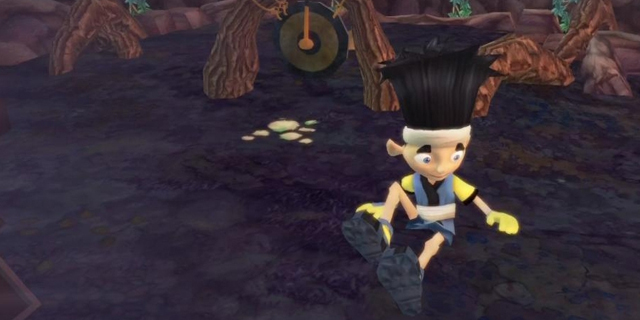Akimi Village is the spiritual successor to NinjaBee’s A Kingdom for Keflings and World of Keflings, and it shows in just how much more streamlined everything seems. Like the Keflings games before it, Akimi Village casts you as a giant charged with building the infrastructure for a tiny society. Unlike the Keflings games, however, you have a reason for doing so.
As the game opens, you find yourself stuck on a floating island whose citizens, the Akimi, need your help. The island is covered in a black fog called gloom, and by creating and managing the village’s infrastructure you’ll unlock seeds that can be planted around the island which push the gloom back. Push back all of the gloom, and the island’s protector spirit will send you home. It’s as good a reason as any to administrate a pretend city, and ridding the island of gloom is a good motivator to push forward, unlock new blueprints, and set the little Akimi to work chipping away at rocks and turning straw into bricks.
If you’ve played either of NinjaBee’s Keflings games then you know what to expect here in terms of graphics, music, and gameplay. Akimi Village looks like a children’s storybook, the buildings are chunky and exaggerated, and the little Akimis’ motions are all just a little bit over-the-top. It’s cute without being saccharine, and everything is easily identifiable. The music grates a little bit as time goes on, but since there’s no dialogue, you won’t be cheapening the experience by turning the music down and listening to your own music while you play.
Gameplay is simple but nuanced. You could do everything yourself – chip away at stones, walk them over to the Work Hut, chop down some bamboo, walk it over to the work hut, build a scaffold, and walk it over to complete the introductory gate. Or you can pick up an Akimi, set him down on the bamboo which turns him into a bamboo gatherer, pick him up again, and set him on the Work Hut which tells him to chop bamboo from that grove and take it to the Work Hut when he’s done. Being an industrious little worker, he’ll just keep on doing that until all of the bamboo is gone (don’t worry – it grows back over time).
The same concept applies to the rocks, forest, and any other resource that needs to be harvested. In a similar vein, some building produce a useful item – the farm, for example, produces straw. In order to expedite production you can turn an idle Akimi into a rickshaw driver and make him cart straw from the farm to the brick manufacturer where another Akimi will take the finished bricks over to the work hut. It’s all introduced slowly, but within an hour of gameplay you’ll be the administrator of a thriving little village, and the only job you really have to do is create the parts called out by blueprints, and set them down where you’d like your next building to go.
Akimi Village has no enemies and no time limit. The challenge comes in creating an efficient village to rid the Akimi’s island of gloom. It’s just as laid-back and relaxed and NinjaBee’s most recent XBLA offerings. Where it is lacking, however, is local multiplayer. The relaxed pace and focus on building and nurturing would make Akimi Village an ideal game for a parent to play with a younger gamer. If you turned off natural disasters in SimCity and just want to relax while playing a game, then Akimi Village won’t disappoint.
Pros: Great visuals, training Akimi is easy, feels like a refined Keflings experience
Cons: No local multiplayer, music isn’t great




















